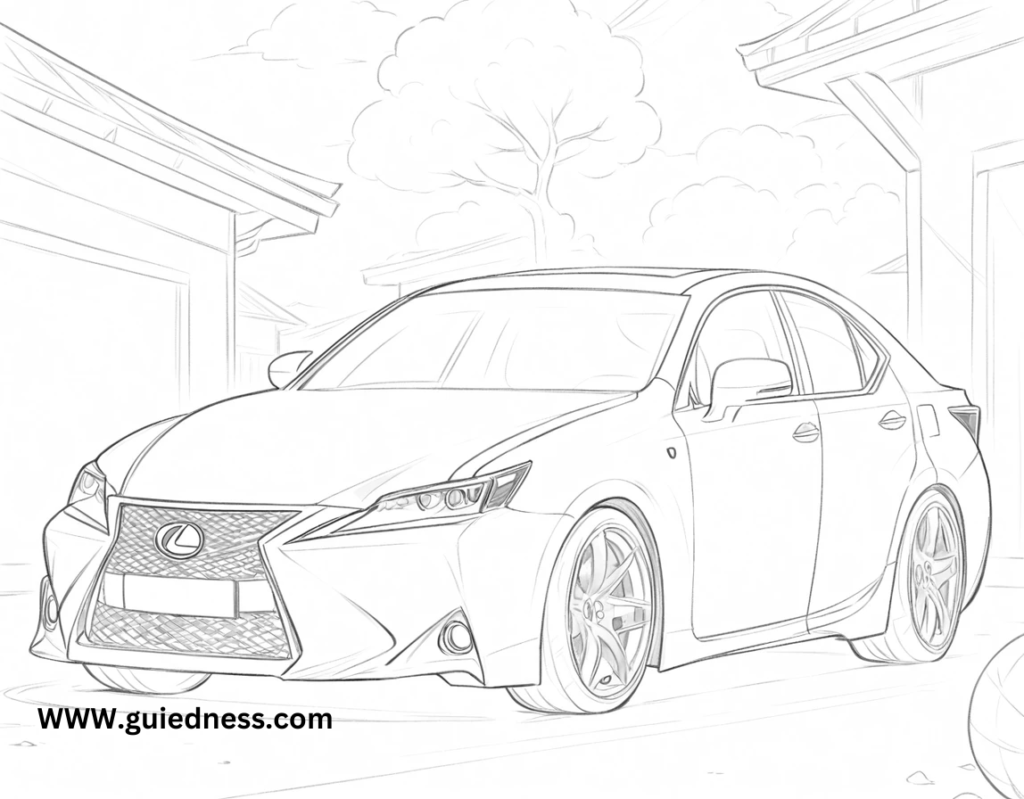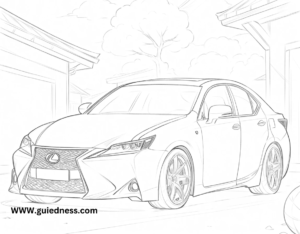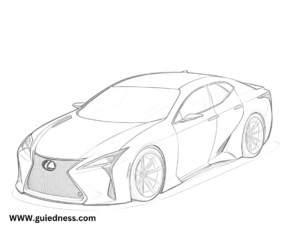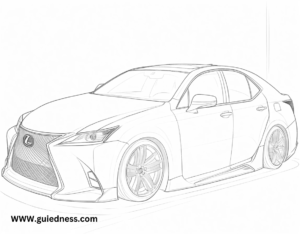Lexus LFR Design and Styling: The Lexus LFR concept showcases a futuristic and aggressive design language, featuring sharp lines, a low-slung profile, and aerodynamic elements. The front grille retains Lexus’s signature spindle design but is more pronounced and integrated with advanced lighting technology.
- Performance: While specific details about the powertrain are still under wraps, the LFR is expected to be a high-performance vehicle, possibly featuring a hybrid or fully electric powertrain. This aligns with Lexus’s commitment to electrification and sustainability.
- Technology: The LFR concept is likely to be packed with cutting-edge technology, including advanced driver-assistance systems (ADAS), a state-of-the-art infotainment system, and possibly autonomous driving capabilities. The interior is expected to be luxurious, with high-quality materials and a focus on comfort and connectivity.
- Market Position: The Lexus LFR is anticipated to be positioned as a flagship model, competing with other high-performance luxury vehicles from brands like BMW, Mercedes-Benz, and Audi. It aims to elevate Lexus’s brand image and appeal to a younger, more performance-oriented audience.
- Release Date: As of now, the Lexus LFR remains a concept, and Lexus has not announced a specific release date for a production version. However, the concept has sparked speculation that a production model could be unveiled in the near future, possibly within the next few years.
- Environmental Impact: Given Lexus’s push towards electrification, the LFR is expected to have a lower environmental impact compared to traditional internal combustion engine vehicles. This aligns with global trends and regulations aimed at reducing carbon emissions.
Design Philosophy
- The Lexus LFR concept is expected to embody the brand’s “Lexus Electrified” vision, which focuses on dynamic performance, emotional design, and sustainability.
- The exterior design is likely to feature aerodynamic efficiency with sleek, flowing lines, a low center of gravity, and a focus on reducing drag.
- The lighting system could incorporate advanced LED or laser technology, with dynamic animations for a futuristic look.
- The interior might feature a minimalist yet luxurious design, with sustainable materials like recycled fabrics, eco-friendly leather, and carbon-neutral components.
2. Powertrain and Performance
- It could feature a dual- or quad-motor setup for all-wheel drive, delivering exceptional acceleration and handling.
- Lexus might incorporate Direct4 torque vectoring technology, which dynamically distributes power to each wheel for optimal performance and stability.
- Expect 0-60 mph times in the low 3-second range, putting it in competition with supercars and high-performance EVs like the Tesla Model S Plaid or Porsche Taycan Turbo S.
3. Autonomous and Connected Features
- The LFR is likely to feature Level 3 or Level 4 autonomous driving capabilities, allowing for hands-free driving in certain conditions.
- It could include Lexus Teammate, an advanced driver-assistance system (ADAS) that offers features like automated parking, highway driving, and traffic jam assistance.
- The infotainment system might include a next-generation interface with augmented reality (AR) displays, voice control, and seamless smartphone integration.
- Over-the-air (OTA) updates could ensure the vehicle stays up-to-date with the latest software and features.
4. Target Market and Competition
- It will likely compete with vehicles like:
- Porsche Taycan
- Audi e-tron GT
- Tesla Model S Plaid
- BMW i8 (or future i-series models)
- By positioning the LFR as a flagship model, Lexus aims to redefine its brand image and attract a younger, tech-savvy audience.
5. Sustainability and Environmental Goals
- Lexus has committed to becoming a carbon-neutral brand by 2050, and the LFR will play a key role in achieving this goal.
- Lexus might also offer battery recycling programs or second-life applications for used EV batteries.
6. Racing and Performance Heritage
- Lexus has a strong history in motorsports, and the LFR could draw inspiration from its racing pedigree, such as the Lexus LFA supercar or its participation in GT racing.
- The LFR might serve as a halo car for Lexus, showcasing the brand’s ability to combine performance and luxury in an electrified package.
7. Speculated Release Timeline
- While Lexus has not confirmed a production timeline, the LFR concept could debut as a production model by 2025 or 2026.
- It might be unveiled at major auto shows like Tokyo Motor Show or CES, where Lexus often showcases its futuristic concepts.
8. Pricing and Exclusivity
- Given its flagship status and advanced technology, the Lexus LFR is expected to be a high-end offering, with a price tag potentially exceeding $150,000.
- Lexus might limit production to maintain exclusivity, similar to the Lexus LFA, which was produced in limited numbers.
9. Global Impact
- The LFR could help Lexus gain a stronger foothold in the EV market, particularly in regions like Europe and China, where demand for electric luxury vehicles is growing rapidly.
- It might also influence the design and technology of future Lexus models, setting a new standard for the brand’s lineup.
10. What Makes the LFR Special?
- The Lexus LFR represents a bold step forward for the brand, combining performance, luxury, and sustainability in a way that few vehicles have achieved.
- It could serve as a halo car for Lexus, showcasing the brand’s ability to innovate and compete with established luxury and performance brands.
- The LFR is not just a car; it’s a statement of intent from Lexus, signaling its commitment to electrification and its vision for the future of mobility.
Technical Innovations
- Solid-State Batteries: The LFR could be one of the first Lexus vehicles to feature solid-state battery technology, which offers higher energy density, faster charging times, and improved safety compared to traditional lithium-ion batteries. This would give it a competitive edge in terms of range and performance.
- Advanced Cooling Systems: High-performance EVs require efficient thermal management. The LFR might incorporate liquid-cooled battery packs and active aerodynamics to manage heat and optimize performance.
- Lightweight Materials: To enhance performance and efficiency, Lexus could use carbon fiber reinforced polymer (CFRP) and aluminum alloys in the LFR’s construction, reducing weight without compromising structural integrity.
12. Interior and User Experience
- Futuristic Cockpit: The LFR’s interior could feature a driver-centric cockpit with a heads-up display (HUD), a digital instrument cluster, and a touchscreen infotainment system with haptic feedback.
- AI-Powered Personal Assistant: Lexus might integrate an AI-driven voice assistant that learns driver preferences and provides personalized recommendations for navigation, entertainment, and vehicle settings.
- Immersive Sound System: Expect a premium audio system, possibly from Mark Levinson, with 3D surround sound and noise-cancellation technology for an unparalleled listening experience.
- Sustainable Luxury: The interior could feature vegan leather, recycled materials, and natural wood accents, aligning with Lexus’s commitment to sustainability.
………………Lexus LFR……………….






